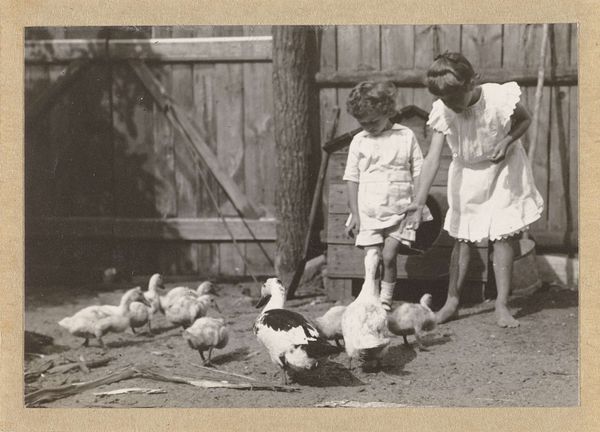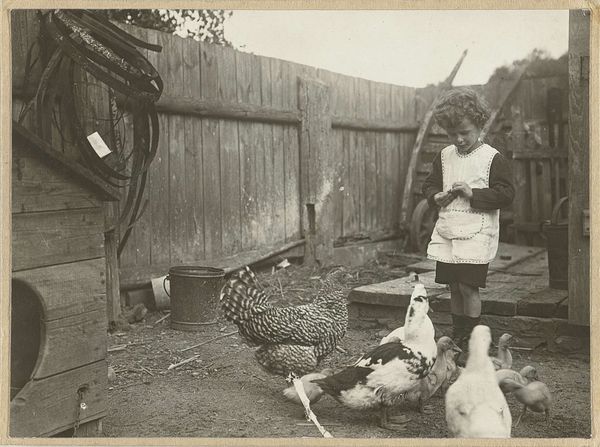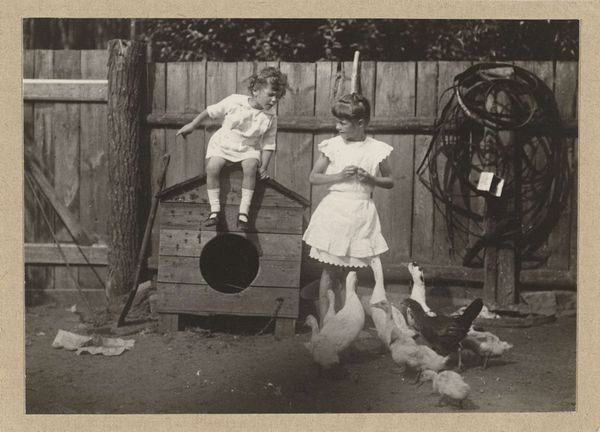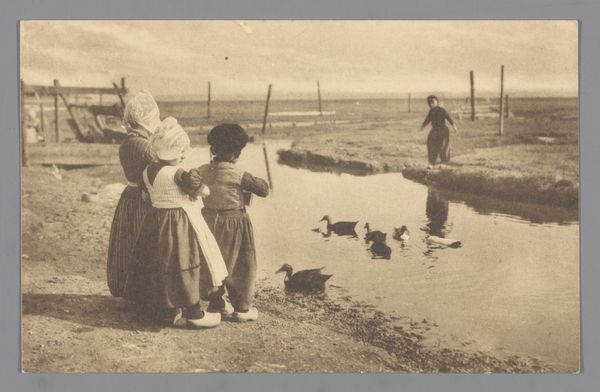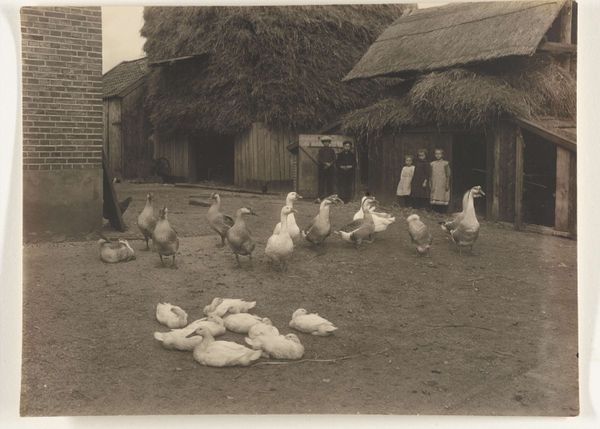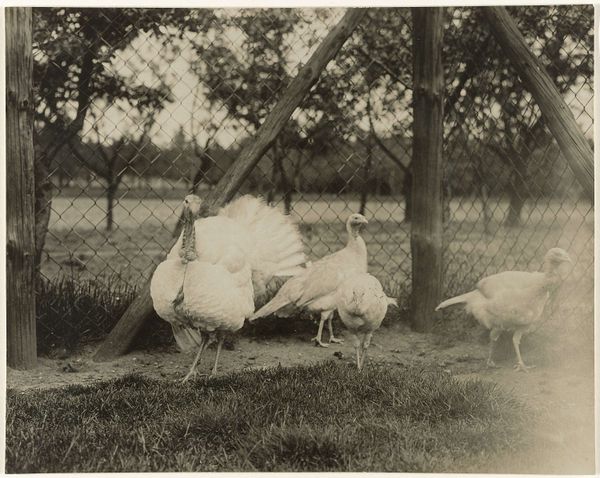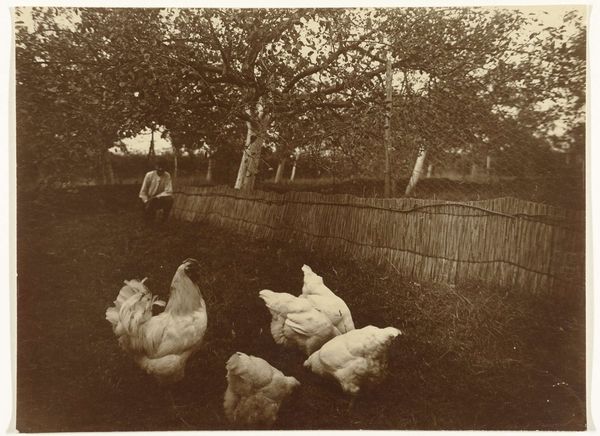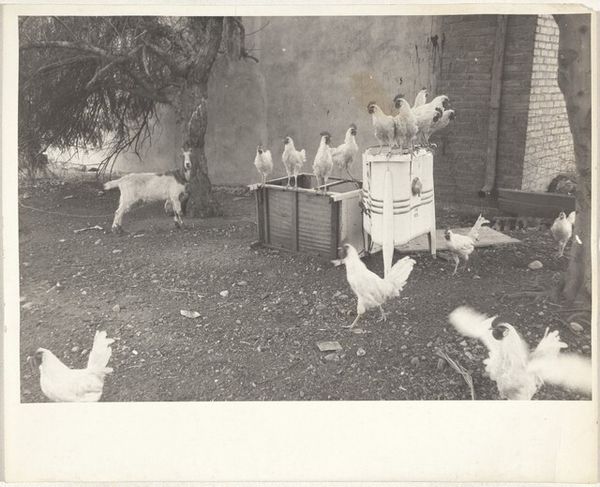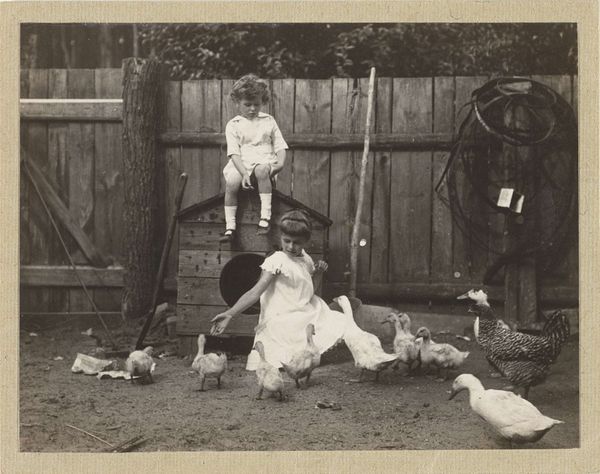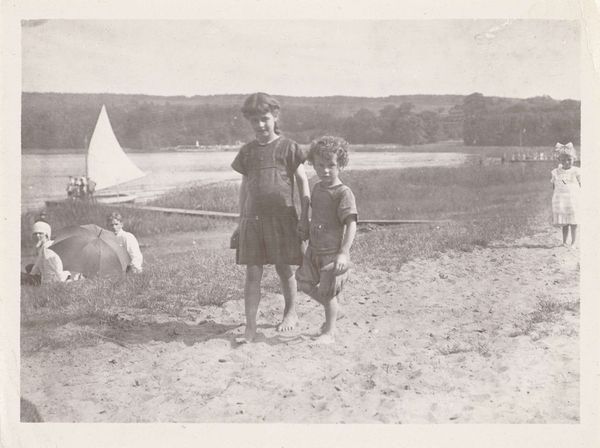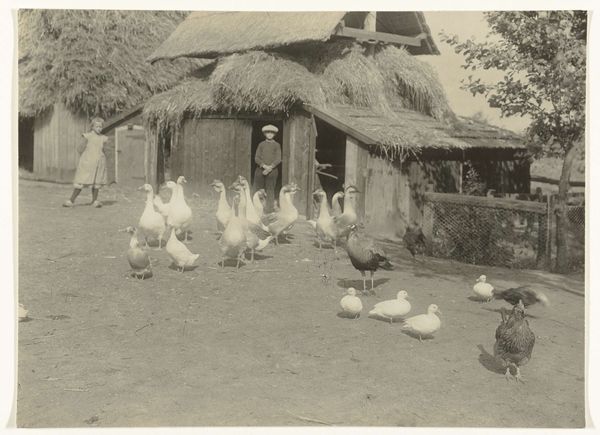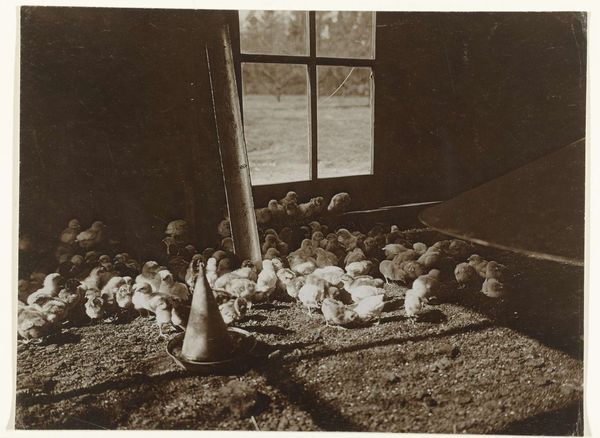
Marba en Eckart Titzenthaler, kinderen van de fotograaf, op een erf met kippen en eenden 1918 - 1919
0:00
0:00
photography, gelatin-silver-print
#
portrait
#
print photography
#
archive photography
#
photography
#
historical photography
#
gelatin-silver-print
#
genre-painting
#
realism
Dimensions: height 53 mm, width 70 mm, height 59 mm, width 77 mm
Copyright: Rijks Museum: Open Domain
Editor: This is “Marba en Eckart Titzenthaler, kinderen van de fotograaf, op een erf met kippen en eenden,” a gelatin silver print by Waldemar Titzenthaler, from 1918-1919. It depicts two children standing in what appears to be a farmyard, surrounded by ducks and chickens. There’s also a dog! I’m really drawn to the textures, especially the wooden fence and the fluffy down of the baby chicks. How do you read this piece? Curator: I see a valuable document of the era's material conditions and the social role of photography. Think about the production of gelatin silver prints: the industrial processes required to create the materials, the darkroom labor, and the accessibility of this technology. Editor: That’s fascinating! So you're saying it's not just about the children, but also the act of capturing this moment with this specific medium? Curator: Exactly. Photography, even snapshots like these, reflects the prevailing economic and social systems. Who had access to photography? Who could afford to document their family life in this way? This work blurs the lines between "art" and a means of social recording. What does it mean to aestheticize the everyday through accessible technology? Editor: So, you see the material of the print and the labor behind photography itself as key aspects of its meaning, rather than just focusing on its subject matter. What are the potential socioeconomic implications? Curator: The proliferation of gelatin silver prints coincided with rising consumerism and leisure time for certain segments of society. Photography became a means of displaying and circulating images, reflecting emerging class dynamics and the culture of spectacle. It documented who society chose to see. Editor: That shifts my understanding entirely. I initially saw it as a quaint depiction of childhood, but now I recognize the cultural forces shaping even seemingly candid moments. Curator: Precisely. We should always analyze not just what is represented, but how it is represented and through what material means. The tools create the representation, after all. Editor: That’s a really valuable insight. I'll definitely be looking at art through a different lens—or should I say, with a different awareness of the lens itself. Thank you!
Comments
No comments
Be the first to comment and join the conversation on the ultimate creative platform.
